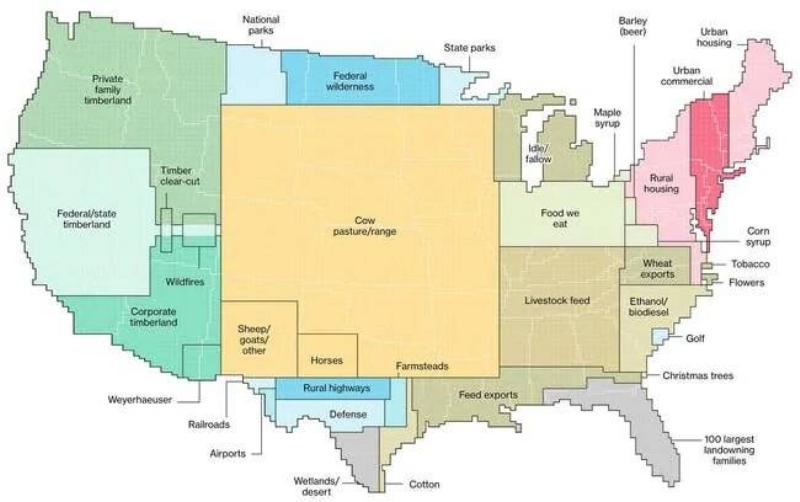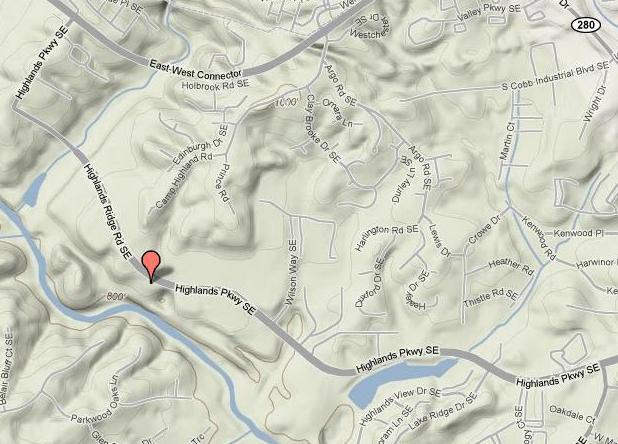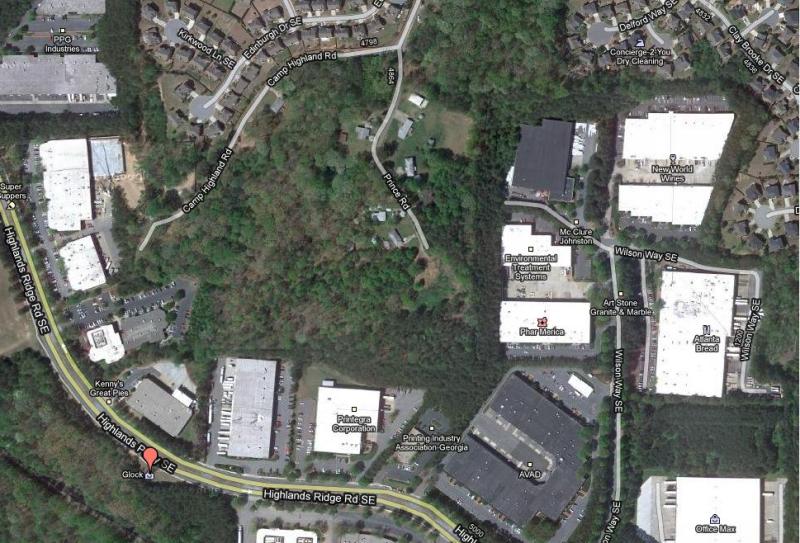Glock’s plans to expand in Smyrna, GA has made news in the metro Atlanta area. This in turn has been picked up by gun bloggers for example here and here.
Rather than just repeat what has been said, I’d like to examine their expansion and the opposition to it from a land use planning standpoint. I have served on my town’s Zoning Board of Adjustment for over 16 years. Boards of Adjustment in North Carolina are quasi-judicial in nature. We hear requests for variances and conditional use permits. We hold public meetings where we take sworn testimony from town staff, those requesting the variance or permit, and those opposed to it. After we render a decision, the applicant can take our decision or appeal it to Superior Court. Most variance requests are reasonable and usually approved.
The process in the City of Smyrna is very similar. The major differences seem to be that they call the Board of Adjustment a “license and variance board” and that they pass the more controversial variances up to the City Council. If an opponent makes a “Notice of Preservation of Constitutional Rights”, the request must be heard by the City Council and not the License and Variance Board (LVB).
Variance Request
Currently, Glock has two buildings where they assemble, test, and ship their pistols. Including an in-progress 17,975 square foot expansion, they have approximately 100,000 square feet of building space. This original plant was built in 1987 and is located in the Highlands Industrial Park. Both these buildings and the expansion are in an area zoned Light Industrial.
This zoning classification allows among other things:
Within any LI industrial district, the following uses shall be permitted:
(714.1) Any industrial use which involves manufacturing, processing, or assembly operations or the storage and sale of heavy materials, products or equipment; but not including those uses which emit obnoxious, injurious or offensive noise, vibrations, smoke, dust, gas fumes or odors or create fire or explosion hazards or other objectionable conditions.
(714.21) Within planned industrial parks, archery and gun ranges (indoor), provided they meet all federal regulations and the National Rifle Association standards governing such activities, as approved by the city building inspector and fire marshal.
Their expansion plans include adding another four buildings totaling 263,277 square feet of space. This will be about 2.6 times more than they have already. They plan to build this on an 18 acre tract of land adjoining their current plant. This area is mostly forested and has a small stream running down it.
The property owner, Consultinvest, Inc., made 3 requests for variances to the City of Smyrna License and Variance Board. While the property will be used by Glock, the actual property owner is the one who must make the request. The variances were required because of encroachments on a) the stream buffer with “no State Waters; b) a stream buffer with State Waters; and c) the 50 ft residential buffer. The last variance request was withdrawn at the June 9th LVB meeting.
The City of Smyrna applies the following standards to variance requests:
Sec. 1403. Variance review standards.
In rendering its decisions, the license and variance board or mayor and city council shall consider the following factors:
(1) Whether there are unique and special circumstances or extraordinary and exceptional conditions applying to the property in question, or to the intended use of the property, that do not apply generally to other properties in the same district.
(2) Whether any alleged hardship is self-created by any person having an interest in the property nor is the result of mere disregard for or ignorance of the provisions from which relief is sought.
(3) Whether strict application of the relevant provisions of the Zoning Code would deprive the applicant of reasonable use of the property for which the variance is sought.
(4) Whether the variance proposed is the minimum variance, which makes possible the reasonable use of the property.
(Ord. No. 2005-34, 8-1-05)
Translated into basic English, this means that if because of the topography or other physical features of your land you cannot make reasonable use of your property when following the absolute letter of the zoning law, you can ask for a variance. The variance can only be just enough to let you use the land reasonably.
Smyrna adopted a stream buffer ordinance in 2005. It requires a 50 foot vegetative buffer from the banks of any stream that drains less than 5 square miles. It also requires an additional 25 foot buffer from there in which you can’t put have pavement or other impervious surfaces. The stream buffer ordinance does allow variances for properties such as this which were platted prior to 2005.
Consultinvest, Inc. and Glock worked with the Smyrna planning staff to come up with plans that would fly. The first site plan seen here was revised to include the building placement. The revised plan can be seen here.
It is obvious to me that they re-sited New Building B so as not to encroach on the 50 foot residential buffer. New Buildings D and E are fairly non-controversial as they adjoin other industrial buildings. Only New Building C which is sited in the triangle formed by Prince and Camp Highlands Roads appears to be the sticking point.
If you look at the Red teardrop on this topo map, the proposed expansion takes place in the flat area in front of it and up into the little valley formed by Prince and Camp Highland Roads. The key thing to me is that the drainage from this land goes AWAY from the residential areas.
Above you can see a satellite view of the area in question. If you were to put your left index finger horizontally across the satellite view starting at the smaller of the existing Glock buildings, you would cover the area for New Buildings B, D, and E.
Hearings and Opposition
The first hearing of the LVB was on June 9th. At that meeting, the Board accepted the withdrawal of the request by Consultinvest, Inc. to encroach upon the 50 foot residential buffer (V10-020). The other two variance requests were tabled until the LVB’s June 23rd meeting.
It is evident that the surrounding subdivisions began to mobilize in the interim. I should note that it is always standard procedure to inform neighbors within a 500 foot radius of the proposed variance of the hearings. Doing a Google search on opposition to the Glock expansion, I found a series of messages starting around June 19th trying to rally the opposition to the plans.
The Wetherbrooke Homeowners Association and other individuals in the subdivision hired an attorney to make their opposition known and to negotiate on their behalf. In the exhibits for the June 23rd meeting there is a letter from the law firm of Lazega & Johanson which makes the notice of “Preservation of Constitutional Rights.” The Wetherbrooke subdivision is just to the Northwest of the planned expansion on the satellite picture.
Prior to the June 23rd meeting, there was a meeting between the homeowners association, Smyrna city planners, and Glock to see if they could iron out the differences with regard to Glock’s expansion. It appears that the HOA had some demands that needed to be met or they would object. They were not totally met.
Glock’s attorney, Garvis Sams, Jr. of Sams, Larkin & Huff, outlined what Glock and Consultinvest, Inc. would do in a letter to the HOA’s attorneys. First, Glock agreed to limit construction traffic and to provide a flagman during the mornings and afternoons when school children are going to or arriving home from school. They did not agree to provide the home owner’s with their security plans due to the constraints imposed by being a DOD contractor.
Glock said it would paint the exterior walls of the new buildings in the same color scheme as the existing building and that they would make sure security lighting was not aimed towards the subdivision. Here is where it gets interesting. It seems that the HOA wanted a park or playground built for the residents of the Wetherbrooke Subdivision and that they were demanding a $150,000 payment be made to the HOA’s “reserve fund” in case of any damages. While saying that they would pay for any inadvertent damages caused in construction, Glock told the HOA that they would not build a playground nor put $150,000 in the reserve fund. Finally, Glock said it was keeping its ammo storage at the old buildings and that their new (indoor) shooting range would be in one of the existing buildings – not the new construction.
The LVB held their June 23rd meeting and passed both variance requests to the Smyrna City Council due to the state opposition.
City Council
The variance requests were on the agenda for the City Council for both July 6th and July 19th. However, the Council tabled it at both meetings and the hearing (and vote) on the variances was held on August 2nd.
Unfortunately, the minutes from the August 2nd meeting have not been published yet. I was informed by the City Clerk today that they were in draft form and they were still being worked on. As a result, what I know about the council meeting comes from the Marietta Daily Journal.
The opposition seems to have been vocal – if not well informed. Reports had more than a hundred people attending the meeting holding signs saying “Save our Neighborhood”. The following comments by a Kimberly Childs seems typical:
“You just heard tonight one of the Glock representatives saying they were planning to move some of their manufacturing here. I’m not at all opposed to gun rights or anything like that, but maybe if they were making vacuum cleaners it’d be another thing; they’re making handguns right by our properties and our children,” said Childs, a mother of two children ages 6 and 4, said.
Mrs. Childs was later quoted as saying:
“That’s our mayor and city council up there, degrading us,” Childs said. “I was surprised the vote was unanimous, and they obviously had more faith in their pro- GLOCK city staffers than they did in their own residents who’ve devoted so much time to proving our concerns.
But GLOCK has a long way to go before these buildings can be built, and we’re looking at our options to appeal this to the Supreme Court, so this issue certainly isn’t over.”
However, there were some pro-Glock expansion comments. Cobb County Chamber of Commerce Chairman Rob Garcia noted that Glock had been a model corporate citizen for 24 years and would be bring up to 100 new jobs to the area over the next few years. He urged Council to approve the variance.
It seems some of the anger was not so much with Glock as with City Council. One lady noted that Glock had provided much more information than Council. She said they would have still opposed it but wouldn’t have been so mad about it.
The City Council voted 7-0 to approve the variance requests. However, it appears that the residents of Wetherbrooke subdivision and their HOA will probably try to hold it up.
Final Comments
If I had been on either the LVB or the Council I would have voted to approve the variances. I say this not because I am a gun blogger but because it would have been the right thing to do. Glock and Consultinvest, Inc. met the standard for granting a variance due to the topography of their land. The use of the land was consistent with the Light Industrial standards including the firing range. Furthermore, Glock appeared willing to work with City staff to make sure their expansion was done correctly and with minimal disruption to its neighbors. As the letter from their attorney in June attests, they were open to changes and willing to work with the homeowners. However, Glock was not willing to be bullied or blackmailed.
Checking the tax listings for both Glock and those named as testifying against the expansion was interesting. Glock had been in their location since 1987. The oldest house built in the adjoining subdivisions was built in 2001. If you buy or build a house next to an industrial area, you should have done your homework. If you didn’t like what was there, don’t buy next to it and expect the industrial companies to change.
The hyperbole from the opposition was all too typical. They didn’t pay attention early on in the process when they could have made constructive suggestions and then got all hyped up towards the end. They based much of their testimony on myth and legend. I found the comments by Kimberly Childs of going to the Supreme Court especially amusing since she is a lawyer in Atlanta and is considered an up-and-coming litigator in Georgia.
I will post an update when I get a chance to read the minutes from the City Council meeting. I’m sure there will be some gems in there!



